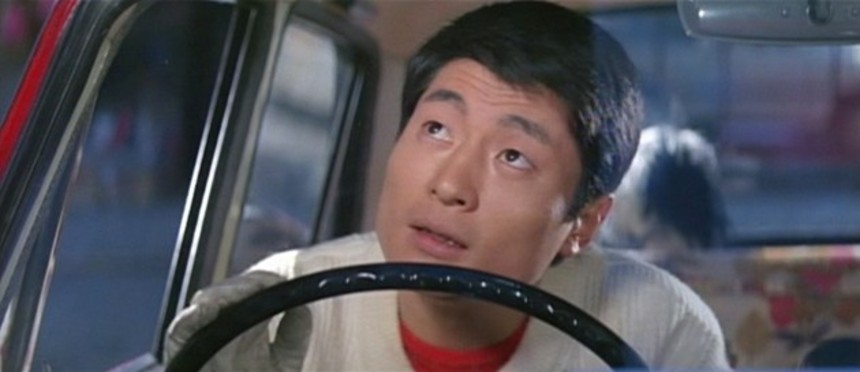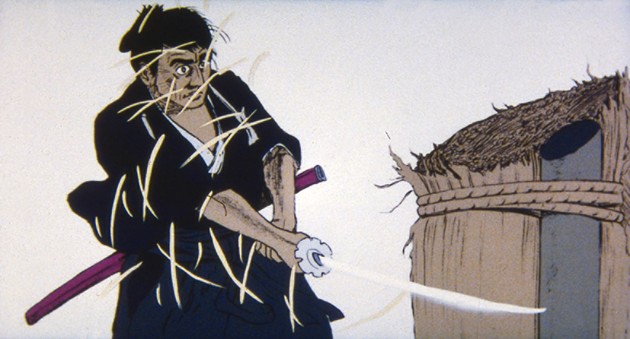NYC Happenings: Oshima's IT'S ME HERE, BELLETT and Eight Experimental Shorts by Tezuka, Rarities at Japan Society

For the past few months, New Yorkers have been treated to some great programs of rarely-screened films by major Japanese filmmakers at Japan Society. In the monthly film series "The Dark Side of the Sun: John Zorn on Japanese Cinema," avant-garde composer and musician John Zorn curated screenings (one with live musical accompaniment) of rare and overlooked Japanese films. The films were quite an eclectic bunch: a silent classic (Kinugasa Teinosuke's Crossroads); pink films (Inflatable Sex Doll of the Wastelands and Top Stripper); and a cult monster movie (Godzilla director Honda Ishiro's Matango aka Attack of the Mushroom People). (You can read Peter Gutierrez's nice piece on Crossroads and Inflatable Sex Doll of the Wastelands here.)
The series wraps on February 20 with rare work by two cinema masters: Japanese New Wave director Oshima Nagisa and the "grandfather of anime" Tezuka Osamu.
Oshima's 28-minute short It's Me Here, Bellett, made in 1964, and produced by the Directors Guild of Japan, was a promotional film for the Isuzu Bellett, a popular sedan car of the time. Although the film was written and directed by Oshima, other major directors are credited collaborators, including Ozu Yasujiro as script advisor, and others such as Gosho Heinosuke and Nomura Yoshitaro who were involved in the project. The jaunty, ultra-cool jazz soundtrack was supplied by Nakamura Hachidai (best known as the composer of the famous song "Sukiyaki").
It's Me Here, Bellett consists of three short stories that prominently feature the Bellett car, with color schemes in which the dominant color matches that of the car featured: red, blue, and green. The first story concerns a man who drives his girlfriend out to a remote place for some implied amorous activity, but the man's fussiness over his car eventually drives a wedge between them. The second story is about a minor actor who's smitten with the head of the production company he's contracted to (played by Koyama Akiko, Oshima's wife and frequent star). To impress her, he buys a Bellett he can ill afford, and jumps at the chance to be alone with her by offering her to drive her to an important meeting. The third story is about a young woman who's having an affair with her superior at work, who's a married man. Resentful at being neglected, she shows up at the company retreat where her lover is there with his wife, eventually taking off in his car, with the intention to kill herself.
This is a very unusual sort of promo film, in that none of these stories end particularly happily. And though the promotional nature of the project seems to have suppressed the brash radicalism Oshima would exhibit in his features, there's still a distinctly New Wave feel to the editing and imagery, and a youthful, pop-oriented flavor to the décor and performances. This was originally made for television; the screening at Japan Society is the film's long-belated U.S. theatrical premiere. It's a minor entry in Oshima's canon, to be sure, but one well worth checking out, especially for fans of the director.

Oshima's film is preceded by eight experimental short films by anime pioneer Tezuka Osamu, works that display an amazing range of styles, colors, and themes, encompassing Japanese and world history, movie parodies, consumerism satire, period fantasy, and dystopia. These visual gems make for a great accompaniment to Oshima's film, as well as beautiful works of art in their own right.
For more information, and to purchase tickets, visit Japan Society's website.

Do you feel this content is inappropriate or infringes upon your rights? Click here to report it, or see our DMCA policy.






